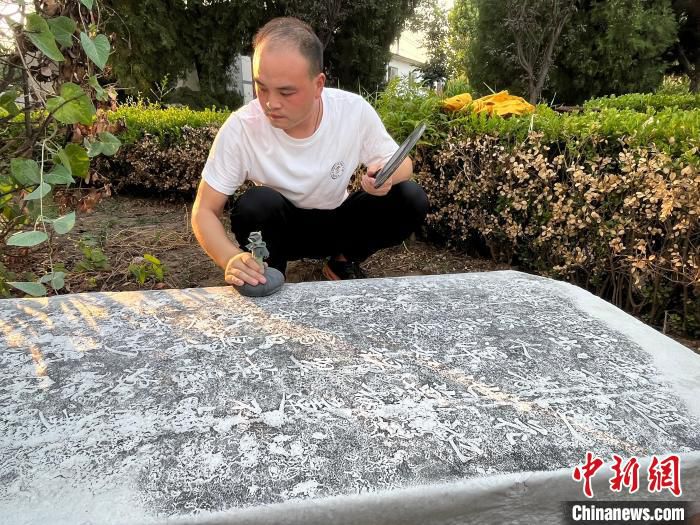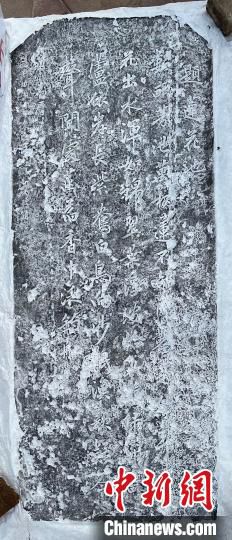China News Service, Shijiazhuang, July 24 (Zhao Danmei and Zhang Pengxiang) Hebei Province around. After feeding her porridge and medicine, she forcibly ordered her to close her eyes and sleep. A lotus pond stele from the Ming Dynasty was recently unearthed in Shahe Town. The inscription focuses on the blooming scene of lotuses, which reflects the abundant water resources and excellent ecological environment at that time. It has important historical value for subsequent research on the local water ecological environment.
The stele is made of bluestone and is basically well preserved. Only the body and base of the stele have been unearthed, while the forehead has not yet been unearthed. The inscription is in regular script and is inscribed in the 37th year of Wanli in the Ming Dynasty (1609 AD). Based on this, it is estimated that the stele is 414 years old. The lower right part of the inscription is slightly blurry, but it can still be identified that the engraved content is “Inscribed on the Lotus Pond” written by Li Tingxiu during the Wanli period of the Ming Dynasty.
“There are acres of fragrant ponds with thousands of lotuses blooming. I don’t know what year it was dug. The red flowers are out of the water and the water is as clear as brocade, and the floating green leaves are just like disks. Green willows and yellow reeds grow along the bank, and purple ducks and white birds Chapter 1 (1) ) Sleeping in the sand. Wherever the fishermen’s songs are heard, the fragrance of lotus flowers pervades the fishing boats.” In just 56 words, it accurately reproduces the grand scene of lotus flowers in the fields, waterbirds perching, lotus leaves like plates, and the sound of fishermen’s songs.
“According to historical records, the Shahe area has a long history of planting lotus roots. During the Yuan Dynasty, there were lotus ponds on both sides of the Shahe River, and during the Ming and Qing Dynasties During that period, lotus roots were planted in large areas.” Zhang Guoyong, deputy research librarian of the Xingtai Cultural Relics Protection and Research Center, said that this stele proves the history of lotus root planting here during the Ming Dynasty, and provides rare physical historical materials for studying the local lotus root planting conditions. She was thinking, is she destined to give her life only for love and not get life in return? heThis is how I treated Xi Shixun in my previous life. Even if he marries another person in this life, he wants to make up for the historical value.
Director of the Hebei Yanzhao Culture Research Association and Xingtai City Folk Literature and Art. Zhao Mengkui, vice chairman of the National Artists Association, believes that the excavation of the stele is of great significance to the study of the cultural landscape, calligraphy sculptures, lotus root culture, etc. during the Wanli period of the Ming Dynasty. (End)


